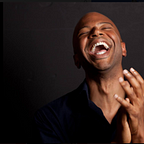DEI Should be a Cabinet Level Position
There is no shortage of cringe-worthy headlines from campus incidents across the country that have to do with race. Take these three examples, chosen from among many that appeared in January alone:
- “Michigan State Apologizes for Hanging Historical Black Figures from Tree in Black History Month Display” (Essence Magazine)
- “In a Homecoming Video Meant to Unite Campus, Almost Everyone Was White” (New York Times)
- “Racist Incidents, Budget Cuts, and Faculty Warnings: Inside the Run-Up to a Campus Book-Burning” (Chronicle of Higher Education)
Higher education administrators across the country are continually thinking about a host of issues — and diversity, equity, and inclusion (DEI) is a subject that’s rising toward the top of the list. It’s a sensitive topic, of course, and one that we’re hearing our clients talk about. The questions are numerous: How do we authentically diversify ourselves? How do we talk about a desire to get better in this space, while recruiting diverse top talent? What kinds of different supports do diverse student populations need, and do we have them on campus?
Before we go any further, let’s first explore the definitions of these terms:[1]
- Diversity includes all the ways in which people differ. This encompasses the many characteristics that make one individual or group different from another.
- Equity refers to fair treatment, access, opportunity, and advancement for all people. It includes striving to identify and eliminate barriers that have prevented the full participation of some groups.
- Inclusion is the act of creating environments where any individual or group can feel welcomed, respected, supported, and valued to fully participate.
Most higher education cabinets look fairly identical: provost, chief information officer, VP of marketing and communications, chief legal counsel, and so on. But if your institution is working toward a more diverse, equitable, and inclusive experience, the boldest statement you can make is to add a chief DEI officer. By doing so, you’re sending a clear message that DEI is important to the administration, and critical to the success of your institution.
Let’s look at a few reasons why this is a good idea.
Structure determines perspective.
Take a look at the structure of your current DEI office, and where it lives on campus. This can be an excellent way to identify opportunities — after all, DEI encompasses a broad range of topics. If your campus’s diversity office is situated within HR or student affairs, consider this: it’s likely to view diversity, equity, and inclusion through the lens of that department. So, a DEI office housed in HR is more likely to focus on the related legal and employment issues; an office within student affairs will probably think more about access and student organizations.
To be sure, both of these approaches are admirable, but each, on its own, fails to address the campus’s DEI needs as a whole. That’s why a cabinet-level position makes sense. When a DEI issue arises that affects the full institution (and someday, it will), a chief DEI officer will be able to provide holistic guidance that can help assess the situation and inform thoughtful next steps toward a solution.
Presidents “getting proximate.”
One interesting observation about higher education leadership is that, intentionally or not, it’s remarkably easy for college presidents to create distance between themselves and an issue. At many institutions, we see a default strategy for DEI incidents: form a task force and assign a “point person.” But here’s the thing: DEI-related initiatives and issues tend to arouse a host of emotions. And a task force is generally the wrong response to anything that has to do with emotions.
When confronting emotional events, like those dealing with diversity, leaders have to get close. It’s what Bryan Stevenson, author of Just Mercy, calls “getting proximate”: removing the layers that exist between you and a thing. He suggests that, by getting closer and sharing space with the marginalized, the underrepresented, or any other “other,” you develop a deeper understanding. And where there’s a deeper understanding, you can have more thoughtful dialogue, which can lead to more thoughtful solutions.
So for higher education leaders to achieve this, they have to remove the layers and space that exist between the administration and the issue at hand. They must truly understand what the issue looks like and who is affected, in order to develop a viable plan of action. This might take the form of a town hall, hosted and moderated by the president or chancellor — not to present a five-point plan for fixing a DEI problem, but to listen, and simply get proximate.
Play the long game.
It’s important to remember that diversity, equity, and inclusion is not a destination. DEI efforts and initiatives will continue to evolve and shift, based on your institution’s individual needs. In fact, the long road to success in this space requires intentional and deliberate thinking. Over the next 25 years, the demographics of the U.S. population will shift significantly, making minorities the new majority by 2045. (And don’t forget: Gen Z is already the most racially and ethnically diverse generation yet.) So playing the long game, and using every decision point as an opportunity to move closer to your DEI goal, becomes even more critical
Diversity, equity, and inclusion isn’t easy work. It’s a space where, when missteps are made, the consequences can be swift, and the road back to trust can be long and arduous. With all of this in mind, creating space for a cabinet-level DEI officer is a savvy and worthy investment.
[1]Adapted from “Why Diversity, Equity, and Inclusion Matter,” Independent Sector, October 6, 2016. https://independentsector.org/resource/why-diversity-equity-and-inclusion-matter/
Originally published at https://ologie.com on February 6, 2020.
